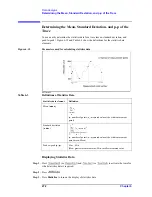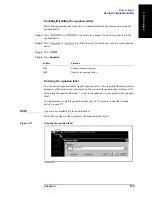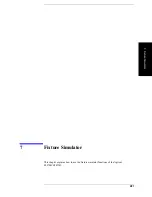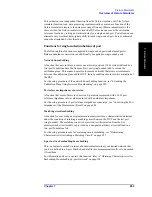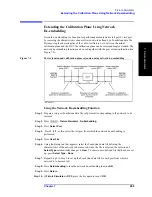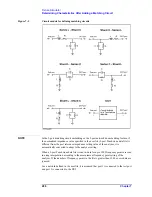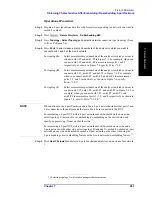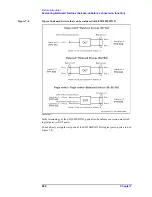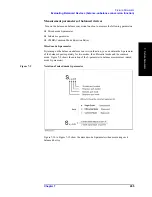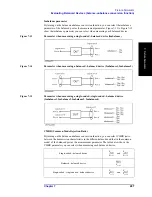
Chapter 7
283
Fixture Simulator
Overview of Fixture Simulator
7
. F
ixt
ur
e
Sim
ula
to
r
Port extension is an independent function from the fixture simulator, but if the fixture
simulator function is on, data processing is automatically executed as a function of the
fixture simulator to improve the data processing efficiency. (Measurement result is the
same as when the fixture simulator is turned off.) Port extension moves the calibration
reference location by setting an electrical delay for a single-ended port. Port extension can
eliminate only electrical delay (phase shift) for each single-ended port. Loss or mismatch
cannot be eliminated by this function.
Functions for single-ended (unbalanced) port
The following three functions are applied to single-ended ports (unbalanced ports).
Balance-unbalance conversion can additionally be applied to single-ended ports.
Network de-embedding
A function that uses software to remove an arbitrary network (50
Ω
system) defined by a
two-port Touchstone data file from each test port (single-ended) and to extend the
calibration plane. This makes it possible to remove networks that create error elements
between the calibration plane and the DUT, thereby enabling a more realistic evaluation of
the DUT.
For the setup procedure of the network de-embedding function, see “Extending the
Calibration Plane Using Network De-embedding” on page 285.
Port reference impedance conversion
A function that uses software to convert an S-parameter measured with a 50
Ω
port
reference impedance into a value measured with an arbitrary impedance.
For the setup procedure of port reference impedance conversion, see “Converting the Port
Impedance of the Measurement Result” on page 286.
Matching circuit embedding
A function for converting an original measurement result into a characteristic determined
under the condition of inserting a matching circuit between the DUT and the test port
(single-ended). The matching circuit to be inserted is either selected from the five
predetermined circuit models or provided by a designated arbitrary circuit defined in a
two-port Touchstone file.
For the setup procedure used for matching circuit embedding, see “Determining
Characteristics After Adding a Matching Circuit” on page 287.
4-port network embedding/de-embedding
This is a feature to embed (in terms of numerical calculation) your desired network that
you have defined in a 4-port Touchstone data file into measurement results or to de-embed
it from them.
For information on how to operate this function, refer to “Obtaining Characteristics After
Embedding/De-embedding 4-port Network” on page 290.
Summary of Contents for E5070B
Page 6: ......
Page 30: ...24 Contents ...
Page 34: ...28 Chapter1 Precautions Before contacting us ...
Page 286: ...280 Chapter6 Data Analysis Using the Equation Editor ...
Page 430: ...424 Chapter12 Optimizing Measurements Performing a Segment by Segment Sweep segment sweep ...
Page 538: ...532 Chapter15 Measurement Examples Executing Power Calibration ...
Page 634: ...628 AppendixB Troubleshooting Warning Message ...
Page 732: ...726 AppendixD Softkey Functions Trigger Menu ...
Page 740: ...734 AppendixE General Principles of Operation Data Processing ...
Page 760: ...754 AppendixF Replacing the 8753ES with the E5070B E5071B Comparing Functions ...




